










Plant resilience
New
Liquid greens Why












Plant resilience
New
Liquid greens Why
The graduates
Two

BY GRETA CHIU
BY ELISE JOHNSON
BY ANNIE CHAMPAGNE

How fortunate it is to work in a sector where actions are driven by a common goal – that of producing the best quality product possible. Most workplaces can only aspire to it.
A great human resources article was published on The Balance Careers website last year, with a list of key reasons why employees quit their jobs. It includes being bored and unchallenged, feeling insignificant and experiencing a lack of recognition for their work. Sounds pretty accurate. Some businesses don’t understand the importance of these factors, leading to high turnover rates, especially among younger employees. Other top reasons for leaving include poor relationships with coworkers, a lack of opportunity for growing their skills and missing autonomy, among others. According to this same article on TBC, dealing with a less-than-effective boss has been cited as the number one reason behind job resignations.
with key industry players. Not to mention the difficulty in choosing a winner for our new Grower of the Year award, who was revealed at Grower Day and will be featured in our August issue. A big thank you to everyone involved.
This comradery isn’t confined to the walls of the greenhouse or garden centre either. Nadine Stielow of Thiel’s Greenhouses reveals details about her new hydroponic installation in this month’s issue (pg. 26). The piece is focused on the technology itself, but a key factor that came through in our phone conversation was the large team effort behind it. To have such a large pool of industry consultants, technical experts and growers ready to share their expertise – it’s awe-inspiring.
Last October, we spoke with former Greenhouse Canada editor Dave Harrison for his spotlight article in the Canadian Greenhouse Conference showguide. For him, the real joy in his career wasn’t so much in the marvelling of plants, but being won over by the people and their enthusiasm for what they do.
“Making money doing it is the bonus, but not always [expected].”
That’s why writing up the Top 4 Under 40 award winners this year was an absolute joy (pg. 20). The passion for what they do and the drive that helps them succeed all came through loud and clear in the nominations from peers and managers. Not only were they written with true appreciation, they clearly demonstrated all the hallmarks of a phenomenal workplace environment.
The humbleness of the winning individuals were no less apparent. Their responses to our congratulatory emails often cited help from key individuals and the collective work of their teams.
With such strong nominations, choosing just four individuals proved to be a difficult task involving evening emails and early morning phone calls
“It’s something they take great pride in sharing with their children and grandchildren. Making money doing it is the bonus, but not always the expectation,” he says.
Many other workplaces could learn a lot from the horticultural sector.
Editor’s note: In the June issue of Greenhouse Canada, an article about the tomato brown rugose fruit virus (ToBRFV) was published. At the time of writing, no cases had been confirmed in Canada. By the time the magazine was mailed, four cases had been confirmed in Ontario. Be sure to follow precautions outlined by your greenhouse extension specialists.



Applications for Agriculture and Agri-Food Canada’s Youth Employment and Skills Program are now open.
The federal government has announced an investment of up to $3.75 million into this program, with the goal of bringing youth into the agricultural industry. Applications will be accepted on a continuous basis starting June 3, 2019 until funding has been fully committed. Projects must be
completed by March 31, 2020. Looking to create over 200 positions, the program will provide up to 50 per cent of the funds to employers across the agricultural sector for hiring Canadian youth, ages 15 to 30. To be eligible, participants must be a Canadian citizen or permanent resident; be underemployed, unemployed or a student; and have not participated in any other Youth Employment and Skills Strategy programs.

The agricultural labour shortage is expected to reach 114,000 vacancies by 2025.
“The persistent shortage of domestic workers is costing Canadian farms approximately $1.5 billion per year and hurting Canada’s overall economic competitiveness,” writes Ken Forth, president of Foreign Agricultural Resource Management Services. It’s only with the help of international farm
workers that Canadian agriculture stands a chance, says the Canadian Horticultural Council (CHC).
To generate awareness and to dispel misinformation around the temporary and seasonal workers’ programs, the CHC has launched a video documentary entitled ‘Heartbeat,’ which is available on the CHC website. The video features a number of seasonal workers who
Flowers Canada (Ontario) (FCO) sends best wishes to research director Jamie Aalbers as he begins his new role with the Canadian Nursery Landscape Association (CNLA).
Aalbers will be replacing Rita Weerdenburg upon her retirement as grower manager at the CNLA. Over his 14-year tenure with FCO, Aalbers has been credited with heading up numerous project initiatives, including the GreenCHIP-Q initiative, the mealybug and poinsettia dip trials, and FCO’s recently established training project among others. At the helm of FCO’s research committee, Aalbers was instrumental in identifying research priorities for the sector, and oversaw three Canadian Ornamental Horticulture Alliance Research Clusters funded in part by Flowers Canada Growers.
For the full story, visit greenhousecanada.com.
have returned year-afteryear, using their wages to support their families back home.
“Food production ... doesn’t have enough margins to pay a lot of money,” says Carmen Perez of Suntech Greenhouses. But for Mexican workers, she continues, the money helps their kids go to good schools, giving them opportunities that lead to better lives.
The video also highlights economic advantages to communities who welcome migrant workers.
“The economic spinoff that Leamington enjoys from the migrant workers being here is substantial,” says John Patterson, former Mayor of Leamington. Whether it’s the trucking companies or the packaging firms, a greenhouse employs many people outside of seasonal foreign workers and leads to spinoff in employment.
2018 Greenhouse stats (year-over-year)
NUMBER OF GREENHOUSES:
TOTAL GREENHOUSE AREA:
Source: StatsCan
AREA INCREASES BY PROVINCE:
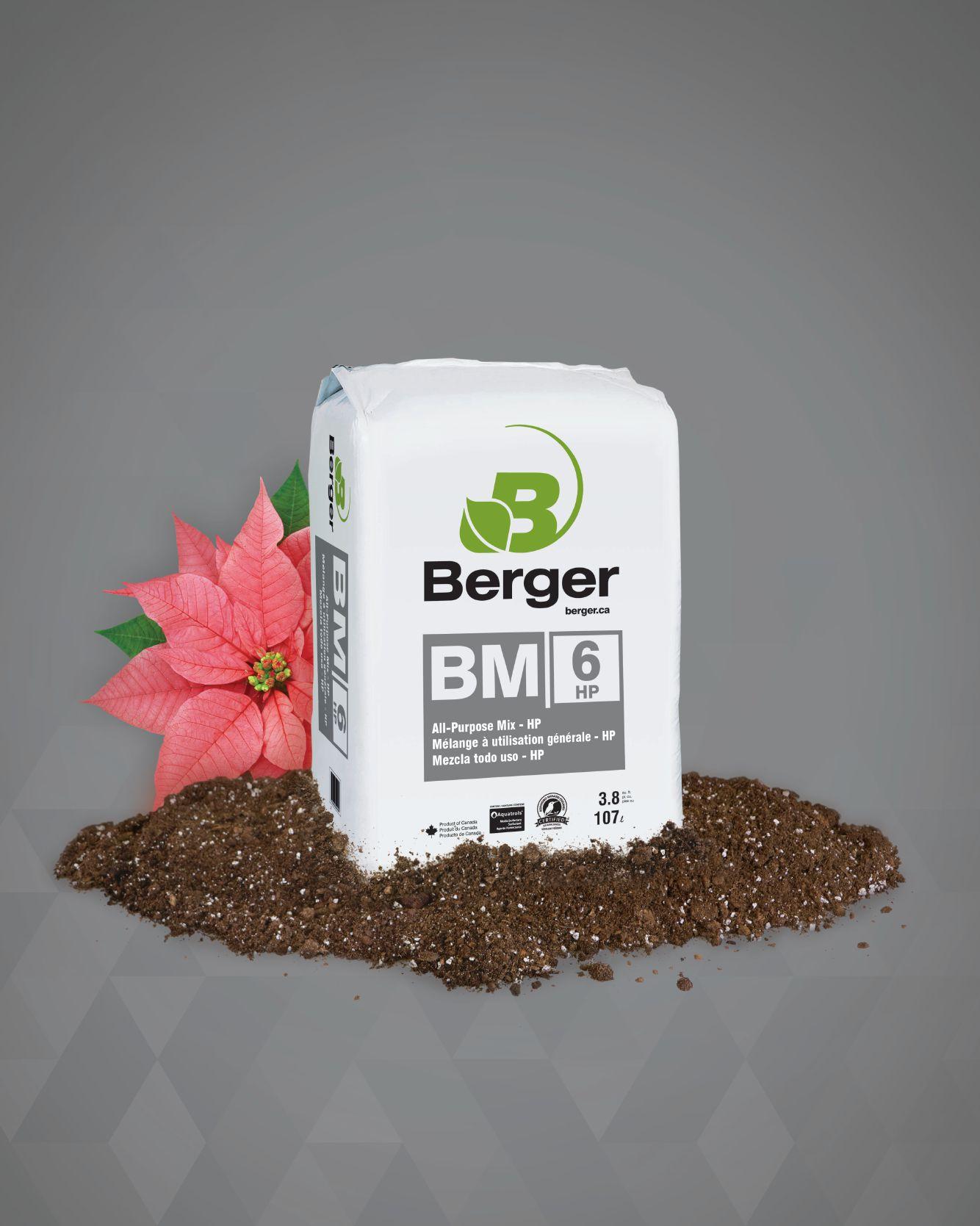


Growers will enjoy the breakthrough breeding evident in this new line. Sunstar will be easy for both northern and southern growers to produce without supplemental lighting. Extra-large flower clusters top full plants that present beautifully in the landscape or containers. Durable in summer heat and humidity. Great in containers and landscapes. Best in part to full sun, vigor rating of 2. 46-56 cm tall, 41-61cm wide. provenwinners.com

Roller Coaster Hot Pink
New Guinea impatiens boasts beautiful double flowers with ruffled flower edges, profuse flower set and medium-vigour plants, making it an outstanding garden performer. Great as a season extender for late spring and early summer retail sales. No-pinch to finish. 2041cm tall, part shade to full shade. dummenorange.com

Danziger’s Cascadias trailing petunia series bring strong, long-lasting blooms to the category. The deep purple centers of Purple Ice explode into bright, purplepink blossoms that are stunning on their own
or in combos. The series features a moderately branched structure and are recommended for baskets and large containers. Large flowers with a semi-trailing habit.
danzigeronline.com
Featuring new blue bicolour, this daylengthneutral series offers absolute uniformity across all colours. Selected for row run production, there’s no need to wait for flower initiation of all colours. Requires
light to medium-high lighting, with slight shading needed under extreme heat conditions in the greenhouse. Recommended for 4” to 12” containers and combinations. 31-46 cm tall, 31-41 cm wide. green-fuse.com

Here’s the latest Wave petunia named an All-America Selections Winner! The plant’s vivid, hot carminecherry colour is bright in the landscape. The lowest growing in the Wave family, it spreads in a vigorous carpet of blooms to create a


beautiful groundcover. The Wave brand celebrates its 25th anniversary in 2020. Perfect for garden beds, baskets, planters and window boxes. Spreading habit. 13-18 cm tall, 91-122 cm wide. wave-rave.com

Naturally well-branched with more vigour than the Bandana series, this lantana produces mediumsized flowers with wide colour coverage. A sterile selection that has been a top-pick in developmental trials. 38-46 cm high, 61-76 cm wide. syngentaflowers-us.com
If you love ‘Cranberry Crush’, try ‘Candy Crush’! This hardy hibiscus shares all the great traits that made ‘Cranberry Crush’ popular: upright, columnar habit, fantastic garden presence, and excellent flower coverage. 8”, bright bubblegum pink flowers have a near-black,
dark red eye and are produced all over its habit of rich, bright green leaves. Can be used in place of a shrub to provide structure in the garden. A perfect addition to the late summer garden. Zones 4 to 9, full sun to part shade. 1.2-1.4 m tall, 1.2-1.4 m wide. waltersgardens.com
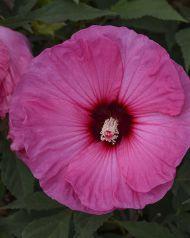

growing environment, a simple, flexible, and sustainable control system is crucial. This is why proactive LPs are turning to Reliable Controls. Our nation-wide network of factory-certified
Authorized Dealers will design, install, and commission a comprehensive control system paired with an intuitive, custom-tailored graphical interface. Take command of your precisely-controlled environment. Generate tracking reports and analytics. Reduce your carbon footprint while improving productivity, quality, and serviceability.
To learn more about this cost-effective and Canadian-made solution, please contact a local Reliable Controls
Authorized Dealer near you.
GORDON S. CAMPBELL
Although skilled tax lawyers may dispute the second half of Mark Twain’s famous claim that “the only two certainties in life are death and taxes,” the death part is hard to avoid. The urgency of succession planning for business owners is particularly acute, as declining health might require others to run the business long before the passing of the founder. Succession planning is much more than just having a will. It extends to business structuring to make transitions legally smooth and tax efficient.
As business lawyers who handle both the solicitor side of drawing up succession and estate plans, and the barrister side of estate and business litigation disputes, here are top four tips for successful succession planning:
1. DRAFT A WILL AND CAREFULLY CHOOSE THE EXECUTOR
The best way to paralyze a business upon death is not having a will, leading to legal strife among potential beneficiaries, and simple paralysis of ongoing operations if no one can legally access bank accounts or sign contracts.
Having a will is important, but so is choosing a
set up for a limited time period and purpose, and often gets automatically revoked upon any incapacity. Consider naming alternate attorneys.
You can make your continuing POA for property become effective as soon as it is signed – but the attorney named must be in possession of it in order to use it – or have it take effect upon incapacity. Being effective immediately could avoid lengthy delays over medical examinations to determine whether you really are incapacitated, however it runs the risk of an attorney acting without your instructions while you are still capable.
In a POA, you can also stipulate limitations on actions your attorneys can take, like giving a POA to manage bank accounts and investments and pay invoices, but not to sell real estate.
...powers of attorney have taken on increasing importance...
wise and prudent executor. Nothing destroys a sound estate plan faster than an unsound executor. Name alternate executors in case your first choice can’t or won’t act.
2. DRAFT A CONTINUING POA FOR PROPERTY AND CAREFULLY CHOOSE THE ATTORNEY
With Canadians living longer, powers of attorney (POA) have taken on increasing importance as declining mental and physical health may be drawn out over longer periods of time. Those running agri-businesses especially need a reliable POA in place. An accident at a younger age could lead to a temporary incapacity that might paralyze business operations as readily as not having a will.
Similar to picking your executor, be careful with who you name as your attorney for property. A POA is a very powerful document. It’s a “continuing POA for property” because it keeps working during incapacity, in contrast to a regular POA which is usually
You can consider being quite liberal in who you name as attorneys for personal care because you will want them to be quickly available onsite when required. You can name as many people as you wish, and name them jointly (where they all have to decide), or jointly and severally (where any one of them can decide). We usually suggest joint and several naming in powers of attorney for personal care (but not in continuing POA for property). Maximize the chance of someone being there to make decisions when and where you need them.
Is your business operating as a sole proprietor, partnership, or corporation? How it is legally set up may affect the way a succession can proceed.
There is no one optimal form of business organization for a smooth succession, though only a corporation can survive death of a principal. You should consult both a lawyer and a Certified Professional Accountant to determine the best business forms for smooth successions, as well as to draft your required will and POAs. Drafting a more elaborate integrated “succession plan” would best prepare for future transitions.
Gordon S. Campbell is a barrister practicing business, estate and POA litigation, and Matthew MacLean is a solicitor practicing corporate, estate and real estate law throughout Ontario with Aubry Campbell MacLean.











Breeders showcase new varieties resistant to disease and tough environmental conditions at the California Spring Trials.
BY RODGER TSCHANZ
In March of this year I had the opportunity to travel from LA to San Francisco on a Ballsponsored bus that was inhabited primarily by Canadian sales staff and buyers. This proved to be a great opportunity for interacting with greenhouse and horticultural professionals from across Canada. We couldn’t help but talk about plants and some of the interesting and exciting discoveries we made as we travelled the coast. This was my first ever trip to the California Spring Trials (CAST) and I’ll be sharing my highlights with you in the next few issues of Greenhouse Canada magazine.
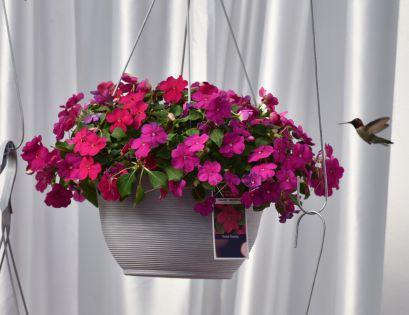
I first became aware of problems with Impatiens walleriana (the traditional shade-loving garden impatiens) in the Ontario landscape during the summer of 2011 when severe defoliation would occur in mid to late summer. As it turned out, the problem was caused by Plasmopara obducens, otherwise known as Impatiens Downy Mildew (IDM), and the problem grew to essentially eliminate the widespread use of impatiens in the landscape for many parts of Canada. Since impatiens were the floral mainstay of shade gardens, their demise left a vacuum in the world of shade landscaping that never was quite filled by New Guinea impatiens, begonias or other
ABOVE Syngenta’s Imara XDR impatiens (1) and Ball’s Beacon Wave impatiens (2) were a large focus at their respective stops during the California Spring Trials this year.

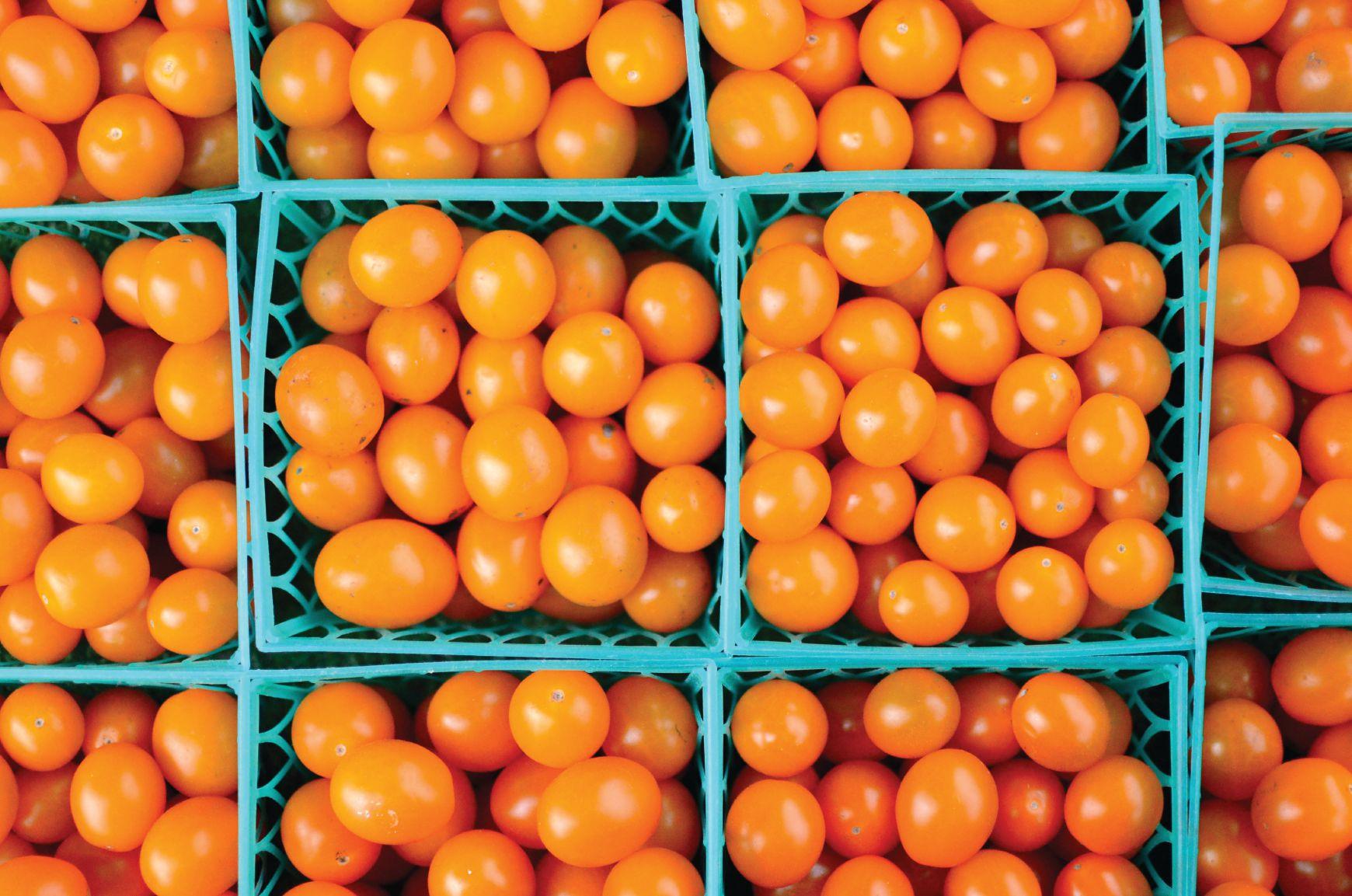

NIAGARA FALLS • OCTOBER 9&10 2019
Join us for the 40th year of Canada’s foremost event and connection point for commercial greenhouse and nursery growers, suppliers, and research partners.




shade-tolerant annuals. In light of this background, it is exciting to learn that downy mildew-resistant impatiens have been developed: the Imara XDR series (1) from Syngenta and the Beacon series (2) from Ball. Testing of Imara XDR occurred both at Syngenta trial sites and confirmed at New York’s Cornell University by plant pathologist Margery Daughtrey. Testing of Beacon was done by plant pathologist Colleen Warfield at Ball’s facilities. Both labs found their respective series to be highly resistant to IDM. There is a lot of pent-up demand among gardeners and landscapers alike surrounding their impending commercial release this season. This is demonstrated by the 40 million Imara XDR seeds that were sold in North America last year in a precommercial soft launch of the product.
At the California Spring Trials, both the Beacon and Imara XDR series were front and center at their respective stops. The Imara XDR lineup from 2018 now has improved orange, purple and red colours with larger flower forms. The series is scheduled to add a red star and true pink in the fall to give a total of nine distinct colours. This series is also said to most closely resemble the Accent Premium series in form. The Beacon series has a similar form to Super Elfin impatiens and is currently commercially available in six colours with more in the development pipeline. The Ball catalogue will continue to offer missing colours in the susceptible genetics until the resistant types become available. Although both series are available commercially, widespread University trialling will continue this season in Canada and the US. The University of Guelph’s trials will include plantings of five distinct Imara XDR colours, six Beacon colours and two IDM-sensitive Super Elfin colours in its trial beds and commercial landscape sites that were inadvertently infected during the 20112012 IDM outbreak.
Seed prices for both Beacon and Imara XDR series have been kept low to encourage widespread production, but we will have to wait and see if the glory days of garden impatiens are set to return.
The XDR attachment to the Imara name stands for ‘eXtra Disease Resistance.’ Also under Syngenta’s XDR banner are selections of Catharanthus roseus (vinca) that form a series


elegantly named ‘Cora.’ Cora XDR (3) selections have survived the screening by 20 different strains of Phytophthora nicotianae (the cause of aerial phytophthora blight) at Clemson University in South Carolina and have been shown to be highly resistant to 10 strains that are of major concern in the southern US landscape. There are 10 Cora XDR colours available; the colour red is not yet available in the XDR line but is still available as Classic Cora. In addition to phytophthora resistance, Cora vinca is known for its round blooms that exhibit little or no gapping between petals, short internodes and a free branching habit.
Spider mites have long been a problem with dipladenia/mandevilla growers. To address this pest, the new Dipladenia Sun Parasol Mite Buster Red (4) from Suntory has velvety leaves that have shown resistance to mite infestations throughout five years of trialling. This plant also has a brilliant red flower colour and bushy growth habit.

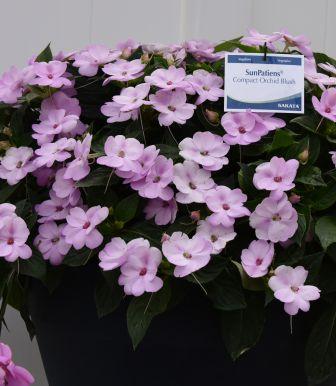
The breeding of plant material to withstand environmental challenges is just as important to the grower and gardener as resisting disease pressure. I often get asked to speak on climate change gardening and what it means. To me, climate change gardening requires the selection of plant material that is resilient and that can perform well under wet and cool conditions one day, while withstanding droughty and hot conditions the next.

The Diascia Trinity Sunset (5) from Danziger seems to be one of those plants. It can handle summer heat while being resistant to rain damage and flower drop. To top it off, it is attractive! Traditionally, diascia (twinspur) has grown well in the spring and fall, being tolerant of cooler conditions, but it would also display less summer bloom production and be subject to severe petal drop during heavy rainfall. The weather tolerance of Trinity Sunset was first observed in a Michigan trial field




where it was the only diascia to retain its blooms following a rainfall.
The SunPatiens breeding program at Sakata has recently incorporated genetic material from a drought-tolerant Indonesian species of impatiens to create a new class of Low Water (LW) New Guinea Impatiens hybrids. Orchid Blush (6) will be the first SunPatiens LW release in 2020. It has a compact growth habit and is reported to last a couple of days longer than the standard SunPatiens line before wilting. To gain the greatest benefits from LW genetics, it is suggested that SunPatiens LW not be mixed in a container with non-LW lines. More LW colours will be added with time; it is expected that Vigorous Orange will be next, followed by another five to six colours over the next five to six years. Sakata made an important note on the tour to remind growers not to use Bonzi on SunPatiens of any vigour, since the series is very sensitive to this plant growth regulator and improper application can seriously stunt the plant for the entire growing season.
Another shade plant that does well in the sun is the hybrid BIG begonia series. There seem to be few pests that bother this plant, and it is adaptable to a wide range of growing conditions. Benary is happy to announce a new colour in this series, that of BIG Pink Bronze Leaf (7) – pink on bronze foliage. The series now has a choice of red, rose or pink flowers on green or bronze foliage.
The hybrid genus, Petchoa, is the result of crossing a petunia with a calibrachoa. The SuperCal series from Sakata is one of the better known examples. This “all-weather” petunia has waxy petals that help with rain and drought tolerance. Indeed, a live display at the Sakata stop demonstrated the SuperCals’ bloom tolerance of constant simulated rainfall. Two new colours, Lavender Star (8) and Snowberry White, have now been added to the lineup for a total of 20 colours to choose from, including the five SuperCal Premium selections that have larger flowers than the standard SuperCal type and a mounding growth habit that is suitable for quart-sized production.
In the world of true petunias, Dümmen Orange has conducted some interspecific crossing with a wild mountain type of petunia that was extremely drought-tolerant. The
crossing resulted in the release of Durabloom Royal Pink (9). Two other Durabloom colours, Hot Pink and Purple will also be in the University of Guelph’s trials this year. In addition to being drought-tolerant, it has a daylength bloom response and has vigorous landscape performance.
When considering weather tolerance and landscape petunia performance, we can’t forget Proven Winners’ Supertunia Vista and Ball’s Wave series. A white colour has been added to the Supertunia Vista series in the form of Vista Snowdrift, and, in recognition of excellent landscape performance, certain colours in the small-flowered Supertunia Charm series have been renamed to form the new Mini Vista series, including this Pink Star (10) In the Wave world of petunias, there are two new colours. The newly released AAS winner, Carmine Velour Wave petunia has the low growing spreading habit of Purple Wave, while the new Easy Wave Lavender Blue (11) has a taller habit. For some of us, it is hard to believe that the Classic Purple Wave petunia will be celebrating its 25th birthday. Perhaps it set a new standard for what should be expected as acceptable garden petunia performance.
Though these were the main highlights from my trip, there were many other examples of resilient plants on display at CAST, including ones from other classes of plants such as perennials, vegetables and woody plants. They may not have fit into the scope of this article, but know that plant breeders are working to produce more tolerant genetics against disease and environmental conditions, creating a better experience for growers and consumers alike. Stay tuned for more of my highlights in upcoming editions of Greenhouse Canada.
Acknowledgements: Thank you to Greenhouse Canada magazine and Ball Horticultural company for their financial and logistical support on this trip. Travelling by bus with Ball Hort, we were hosted by a number of breeders, including PanAmerican Seed/Ball Horticultural, Westhoff, Green Fuse, Gro-Link, Dümmen Orange, Proven Winners, Takii, Sakata, Danziger, Syngenta, Floranova, Cohen, Jaldety, Hishtil, Pacific Plug and Liner, and Benary.
Rodger Tschanz is the Trial Garden Manager at the University of Guelph. He can be reached at rtschanz@uoguelph.ca.
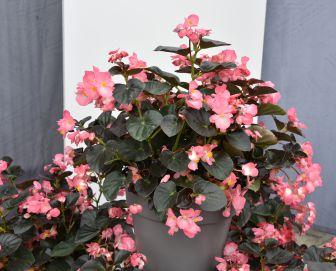
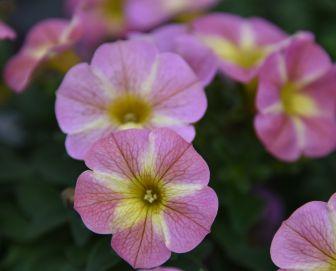





There are many types of growing medium offered by horticultural suppliers. Each growing medium is unique and addresses the characteristics that are ideal for the crop grown. Young plant growing media are no exception. Young plants can be defined as any immature plant that is produced to be transplanted and grown on to maturity or until it is ready to be sold to the end user. Young plants include the production of seedlings and rooted cuttings. Both categories require different growing media.
Seeds used to produce seedlings or plugs are often very tiny and are grown in small-cell trays, such as 288’s or smaller cell sizes. As a result, growing medium for seed germination must contain fine components that allow for uniform filling of plug trays from one cell to another and that can also keep the seed in the upper profile of the growing medium. Coarse components can allow for the seed to move down into the depths of the cell during irrigation, causing poor or inconsistent germination.
Unrooted cuttings also require a growing medium with fine components, but they are more susceptible to overwatering and poor root development. Many are started in larger celled plug trays, such as 72’s or 50’s, so larger media components can be incorporated into the growing medium to increase air space and reduce water retention. Often companies will use a fine Sphagnum peat moss, but incorporate large perlite or coir fiber to accomplish this.
Most young plant growing medium have a base of fine, Sphagnum peat moss and to this perlite, vermiculite, coir or in some cases, compost is added Each component contributes to the overall performance of the growing medium by influencing the physical and chemical properties as seen in Figure 1. Keep in mind that the size of each individual component has an influence on these properties. The larger the size of the component, the more air space it provides and contributes to faster dry down of the growing medium
root development. Each component has good attributes as well as some that are more challenging. For example, if you are using a growing medium for producing plugs or rooted cuttings, it is often more attractive to use perlite because it increases air space, while allowing for more rapid dry down. This type of growing medium is more forgiving when overwatered. The down side is that perlite makes the mix more “crumbly” so the growing medium falls apart more easily. Therefore, a better developed root system is needed to keep the root ball in tact, increasing the production time. For help on deciding which growing medium works best for your need, consult your growing medium manufacturer.

Examples of different growing media used for various young plant production methods. Each is specialized and growers should evaluate products to determine which growing medium is best for their growing needs.
Source: Premier Tech Horticulture.
When growing in plug trays and wrapped pots, plants are grown with a very small volume of growing medium. Plug trays are typically shallow and there is little influence of gravity to pull water through the cell of the tray. The growing media selected for plug trays and wrapped pots should provide good air porosity and adequate drainage, much higher than standard growing media. Growers must take care not to over water or saturate the growing medium. For seed germination, deep plug trays are preferred since water and nutrient solution can move downward within the column of the cell. There are various cell configurations to consider, whether a round, square or octagonal shape. Each is different and growers should evaluate plant root growth in various trays before switching and growing entire crops.
For wrapped pots, the growing medium must be fibrous to minimize compaction during the filling process. However, the growing media should be virtually free of large roots, sticks and debris to avoid obstructions when the pots are cut to size in the machinery. This can be a challenge finding peat that is fibrous and free of debris without many fine particles. Some growing media manufacturers offer products that combine peat and coir fiber to provide products with good fibrous structure and minimal debris
Figure 1. Typical characteristics of the most common growing medium components . used in young plant growing media. For dry down rate, this indicates how a component influences the time it takes for a growing medium to dry out when this component is used
Ideally the growing medium should have good water retention to encourage seed germination or rooting of cuttings, while having good air space to encourage good
For propagators of unrooted cuttings, there are several stabilized growing media products on the market. Stabilized growing media are preformed cells made from foam, peat with urethane binders, rockwool or other materials. Although still in development, the goal of this growing media it that it can be filled into any size tray and the binder forms the plug after several weeks.
The advantages are that growers can select any plug tray they wish, there is no need for expensive equipment for wrapped pots, the labor is reduced and the cost is marginal for growing media with a binding agent.

Growing media for wrapped pots requires ‘debris-free’ products that are fibrous and resist compaction. Peat, coir fiber and coarse perlite blends offer good fiber and proper aeration/water holding properties.
Source: Premier Tech Horticulture
Understanding and managing water quality is key to successful young plant production. As previously mentioned, there is a small volume of growing media in the root zone, therefore buffering is minimal and nutrition status and pH of small cells are easily influenced from watering and applications of fertilizer. Typically, seed plug trays and wrapped pots for cutting production are not fertilized in the first weeks. However repeated misting and irrigation can leach any pre-plant nutrients, if present and the limestone in the growing media will cause the pH to rise. Because of the potential of irrigation water to further raise the pH of the growing medium, it is important to start with growing media with a low pH around 5.0-5.2. As seeds germinate and the first set of true leaves appear and as cuttings begin to root, a weak solution of water soluble fertilizer should be applied. Generally, an application rate of 50 ppm of nitrogen at each watering with every fourth irrigation with clear water is adequate to start. Increase the rate of nitrogen as plants roll out new leaves and develop, if necessary. Use water soluble fertilizers that have adequate levels of micronutrients, particularly iron and manganese when applied at the low rate.
When growing any crop, problems can occur. The most common issue with young plants is overwatering or keeping plugs / liners constantly moist. This can contribute to numerous problems.

A moist, wet growing medium serves as an ideal environment for the growth of algae. The surface layer of algae will continue to thicken as long the surface does not dry out. Algae serves as a food source for shore flies and in addition, they prefer moist / wet growing medium for their larvae to grow and survive. Fungus gnats are also attracted to moist /wet growing media, because it encourages fungal growth within the growing medium, which is their preferred food source. Fungus gnats do not require a wet growing medium to support their growth, unlike shore flies. To minimize any of the above problems, try to dry out the growing medium between irrigations as soon as possible
Pythium and Phytophthora are both water molds which require high moisture in the growing medium to thrive. It best to allow the growing medium to dry down between watering to discourage their growth. Keep in mind that anything that causes plant stress, such as over watering, underwatering, high salts, inadequate fertilization, etc. will make plants more susceptible to attack from any type of root rot pathogen. These stresses must be corrected to minimize root diseases
Often poor root development is caused by overwatering. Too much water causes roots to stay up in the upper layer of growing medium so they can access oxygen. If the roots grow down into the continuously wet growing medium, they will suffocate and eventually die. It is best to again allow the growing medium to dry down between watering to encourage root development in the bottom of the cell. Other factors that can contribute to poor root growth is improper fertilization, overfertilization, pH imbalance and root disease.
When deciding on which growing medium for young plant production, determine your growing needs and consult with the manufacturer. Ask for samples and evaluate the product under normal growing conditions. If you grow a wide array of plant species, sample an adequate amount to be sure it will address the needs of various crops, trays/cell sizes and your particular growing situation. By following these guidelines, you can determine which product is best suited to your needs
Ed Bloodnick Grower Services & Product Development Director PT Horticulture & Agriculture
Susan Parent Horticulture Specialist PT Horticulture & Agriculture
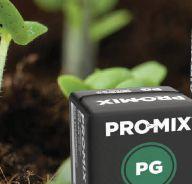



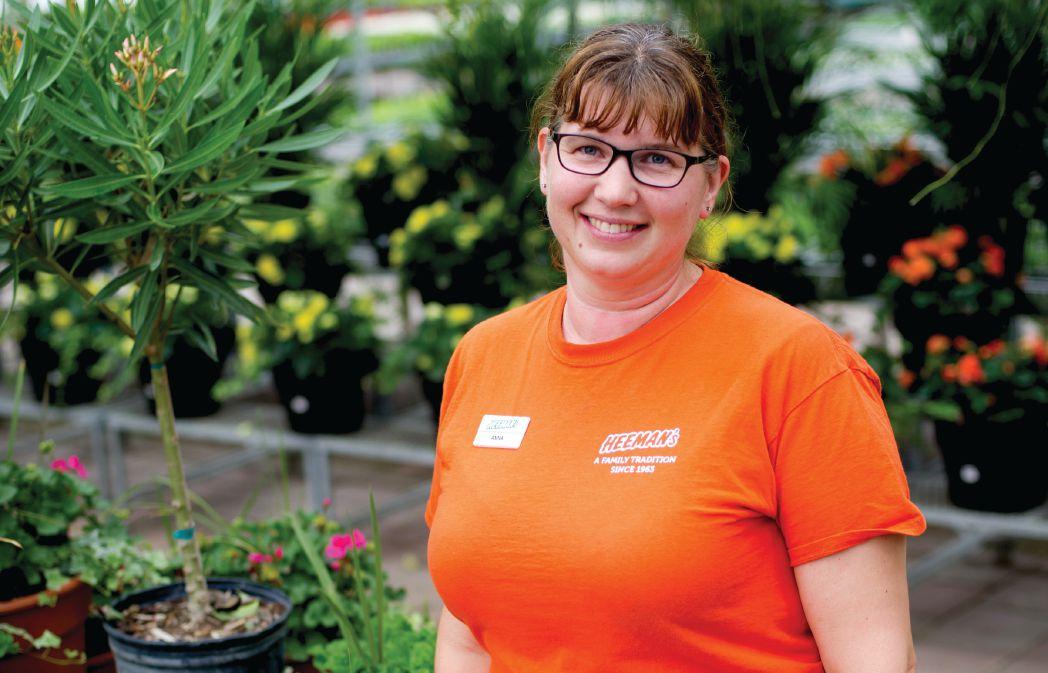
For this year’s Top 4 Under 40 award winners, their achievements are just the beginning.
BY GRETA CHIU
A passion for plants, a need to succeed and a drive to elevate the horticultural industry – those were all commonalities among the winners of Greenhouse Canada’s Top 4 Under 40 awards this year. These bright young stars are a testament to the continued success of the greenhouse sector.
ANNA COOPER
HEEMAN GREENHOUSES
THORNDALE, ON
“Although I’ve always enjoyed planting and watching things grow, my interest started in the industry when I got my first summer job,” says Anna Cooper, production manager at Heeman Greenhouses.
During her high school years, Cooper worked at a local greenhouse and strawberry farm after school and on weekends. With a blossoming love for the industry, she pursued a diploma in horticulture at the University of Guelph’s Ridgetown Campus and has been working in the industry ever since – for a total of 23 years.
“Anna Cooper is the real deal!” exclaims Will Heeman, owner of Heeman Greenhouses. He
ABOVE
Anna Cooper
describes Cooper as an extremely capable grower and a hard working individual who combines work ethic and intelligence. “Despite being one of the youngest and newest people on her team, she quickly earned the respect of her peers who now turn to her for advice,” says Heeman.
When Cooper first joined the greenhouse operation, the founder and long-time grower of the business – Heeman’s grandfather – passed only four months later. “This came at a time when our sales were growing by double digits, year over year, and we were working hard to maintain quality while adding more greenhouses, new staff and adjusting our production plans,” says Heeman. Cooper was a bright spot for them during that tough time, continues Heeman, as she stepped up and shouldered more responsibility while they restructured their team.
Since being hired as a seeder less than two years ago, Cooper now serves as the right hand person to the general manager, overseeing a team of over 15 direct reports that include waterers, seed machine operators, transplanting and soil operations staff, among others. She is also


responsible for staff training and work scheduling to ensure maximum output while adhering to tight production timelines.
“One major accomplishment is Anna has added fall annual production to our lineup and she ran trials to improve our mum and cabbage production, which have resulted in a complete change to our growing plan for 2019!” says Heeman. For their Christmas season, Cooper also helped streamline production for winter green porch pots, as their sales targets grew from 1,000 to over 3,000 in the past three years.
Known for her strong drive for selfimprovement, Cooper looks for ways to work smarter and leads by example. She actively seeks out educational opportunities and scouts for new varieties to add to the operation’s portfolio. She was recently named one of GPN’s Top 40 Under 40.
For Cooper’s part, she credits her coworkers for motivating and challenging her to excel every day. “They believe in me and the knowledge I have to constantly improve the crop, the workplace atmosphere, and ultimately the business.”
Bonanza Gardens is a wholesale supply chain management company. We supply, operate, manage and service major retail outlets throughout Ontario & Quebec.
Servicing garden centre businesses for over 30 years, we continue to stay dedicated and committed to providing high quality products and services to our valued customers.
“I was born and raised in this industry,” says Jason Kok, owner and grower at Amsterdam Greenhouses in Pitt Meadows, BC.
As a child, Kok worked alongside his parents in their greenhouse and continued in the family business into adulthood. He went on to take horticultural courses at Kwantlen Polytechnic University and gained experience working with local growers of bulbs, perennials and nursery stock.
“When I came back to the family business, I gained a larger perspective for the business and the direction that we would take it,” he says.
In 2017, Kok and his wife Lindsay bought the greenhouse and garden centre business from his parents.
“Continuing his family business is very important to him, as this is the legacy of his parents,” says Lindsay. “I am very proud of what we have done


to the company since we’ve owned it.”
The greenhouse operation now proudly uses all organic media and a mycorrhizal fungal product with their organic feed.
Described as compassionate with a sense of humour, Kok’s management style has built a strong work environment









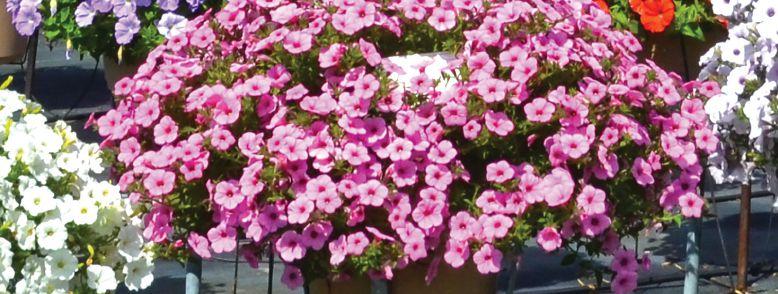

WEDNESDAY JULY 24th | 8AM - 5PM | saway agardentrials.ca
Thank you to our 2019 Event Sponsors Focus Greenouse Management Inc., AMA, Ball flora plant, Ball Superior, Benary, Berger, C French Ltd., Colonial, Concept Plastic, Darwin, DummenOrange, Ed Sobkowich Greenhouses, Express Seed, Florist Holland, George Sant and Sons, Green Fuse, Greenhouse Canada, HC Canada companies, JVK, Linwell Gardens, MGS/Plant Products, Orchard Park, PanAm, Proven Winners, Sakata, Selecta, Sonnyside Flowers, Syngenta Flowers, Vacform, Vanden Bussche Irrigation


based on teamwork and trust, paying compliments when due and addressing problems where needed. He listens to what the staff have to say and makes the changes they request, says Lindsay, “and in doing so, it makes the staff feel at home.”
Kok also organizes regular training and educational workshops, drawing from outside industry expertise to ensure their staff can access the latest skills and tools. “Instead of just a job, many of our staff feel this is their career,” says Lindsay.
Engaged in their local community as well as the horticultural sector, Kok is an active member of the BC Nursery and Landscape Association, as well as United Flower Growers’ Association and Nurseryland Canada.
Celebrating Amsterdam Greenhouses’ 40th anniversary, the results of the couple’s hard work has not gone unnoticed. The business was presented with the Agribusiness of the Year Award by the Maple Ridge-Pitt Meadows Chamber of Commerce earlier this year.
“My motivation comes from my family and the drive to continue to build my business and grow our family legacy,” says Kok.
WAINFLEET, ON
“I grew up on our family’s field vegetable farm,” says Jeff Newhouse of Waldan Gardens in Wainfleet, Ont., “and when I was 13, we decided to build our first range of greenhouses.”
Spending his summers and Saturdays working at the greenhouse, Newhouse found himself wearing a number of different hats and gained experience in a number of different roles. The knowledge and skills he acquired proved to be indispensable.
After completing university, Newhouse joined the family business full-time, focusing on finance, administration and capital projects. A lover of new opportunities and challenges, he found himself taking on a number of key projects once again in his role.
Newhouse was at the helm of Waldan Gardens’ recent 120,000-square-foot expansion, says brother Chris, co-owner of the greenhouse operation. “This
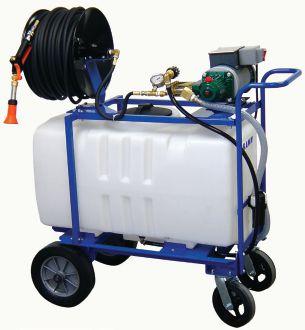





has been a monumental year for Jeff.” Through careful planning and thoughtful execution, Newhouse was instrumental in the layout and design of the new facility, bringing in new machinery for automating many of the greenhouse’s production processes.
In addition to lessening their labour load, Newhouse worked to reduce energy costs by procuring and installing Waldan’s cogeneration unit in 2017. Described as a “behind-the-grid power plant,” the unit currently handles the lighting load while supporting the heating needs of the facility, says Chris. Outside of the greenhouse, Newhouse is an active member of Ag Energy’s board of directors.
Always seeking to elevate the floriculture sector, Newhouse has hosted a number of events at Waldan’s, including grower meet-and-greets in partnership with Berger, Zwart Systems, and Verhoef Electric, as well as a Petals & Plates consumer dinner event with Flowers Canada – drawing 120 to 150 guests. Whether it’s improving grower rapport or raising awareness around local flower production, Newhouse’s activities clearly reflect his dedication to the sector.
LANGTON,
“My love of plants and unlocking their potential, paired with a passion for business, has always been in my blood,” says Dusty Zamecnik, co-owner and production manager of EZ Grow Farms.
While the family operation has been propagating strawberries for well over 20 years, he explains, it was through his involvement with various agricultural associations that he came to understand
the emerging greenhouse berry industry.
Described as a horticultural innovator, entrepreneur and passionate advocate for Canadian growers, Zamecnik was one of the first to assess the need for properly grown strawberry plant material for the young greenhouse strawberry market, says Shawn Mallen, manager of hydroponics and manufacturing at A.M.A. Horticulture. Travelling back and forth from Europe to research innovative techniques, Zamecnik introduced the first commercial suspension propagation system to North America.
Pairing this European propagation technique with a Cravo retractableroof greenhouse from a Canadian manufacturer in Brantford, Ont., EZ Grow Farms has become a key source of young strawberry plants in North America. Initially starting with a trial order of 40,000 plants in 2016, they now grow over 1,200,000 plants for greenhouse growers, with more acreage coming online annually, says Mallen.
Crediting their success to the team at EZ Grow, as well as key suppliers and financers, Zamecnik says he is motivated by working with like-minded individuals who “embrace the unknown, pioneer the future and take that leap of faith.”
Known to share his knowledge with with colleagues on strawberry production, he also uses social media to dispel myths
and stereotypes around modern farming practices, including pesticide use, sustainability and automation, says Mallen.
Zamecnik has volunteered with a number of industry organizations, including his roles as a board member of the Berry Growers of Ontario, chair of the Norfolk County Agricultural Advisory Council, member of Canadian Horticulture Council’s Berry Working Group, and the Young Farmer Representative for the Ontario Fruit and Vegetable Growers’ Association,
among others. In 2017, Zamecnik received the Ontario Outstanding Young Farmer Award. In his limited spare time, Zamecnik hones his entrepreneurial skills by growing Hometown Brew Co., a joint venture with his cousins that uses local produce, including EZ Grow’s own blueberries and hops.
“Dusty’s passion for the industry and energy for ongoing education and innovation is contagious,” says Mallen, “and we can’t wait to see what he will do next.”




This ornamental grower dives into leafy green production with her new hydroponic system.
BY GRETA CHIU
Already established in her retail and wholesale ornamental business, Nadine Stielow, owner of Thiel’s Greenhouses in Bruderheim, Alta., considered a number of crops, examined consumer demand and local supply, then reached out to industry consultants before settling on hydroponic lettuce.
Existing greenhouse structure was a key consideration, as the new additions were acquired from another grower. It wasn’t tall enough for tomatoes and cucumbers, Stielow explains.
Lettuce is a good choice for ornamental growers with a limited season, says Shawn Mallen, sales and hydroponics manager at A.M.A. Horticulture. Since Stielow’s ornamental production closes down from July to February, hydroponic lettuce offered a more stable, year-round opportunity for her employees.
Building inside a pre-existing greenhouse structure influenced her choice of hydroponic technique, of which there are two main choices: nutrient-film technique (NFT) and deep water culture (DWC or “the pond”).
Retrofits can be harder for NFT where the troughs are set at certain lengths, says Mallen. While NFT is a good choice for smaller operations, the pond has greater potential for scaling up.
Theoretically, Stielow’s team could have pieced together a system themselves, but local producer Doef’s Greenhouses showed them the ease of their own DWC system. Delivered as a ready-to-build kit from Dry Hydroponics, a key advantage was having uninterrupted access to the Dutch manufacturer’s support and guidance, not only during the building phase, but continuously throughout production.
venturing into a whole new world of growing – two businesses under one umbrella. Why wouldn’t I go for as much tech support as I could possibly have?” says Stielow.
Once the initial groundwork for the pond structure was laid, the “hydroponics-in-a-box,” as Stielow describes it, arrived. From there, they simply put the pipes underground, installed the circulation and pump systems, then lined the

“I knew nothing about growing hydroponically. I’m
pond before hooking up the parts and adding water.
The patented rafts lift the crown of the plant up over the water, leaving only the roots in the solution. This reduces the







Energy costs for Greenhouses are roughly $40,000/year (and going up)
Insulating your floors with Insta-PanelsTM will save you up to 25% on energy cost annually
Insulating
Low



While the kit comes complete with materials for the rafts and pools, Stielow tried different substrates before settling on a sticky peat by BVB Substrates. Its long-fibre quality allows her to form her own peat blocks, and among the substrates she tested, has resulted in more even germination and faster growth. A machine is used to help her
form the blocks within the seedling raft. European black peat has qualities that differ from Canadian peat. “For some specialty crops, we find that their peat lends itself better,” says Mallen, but for other potted ornamentals, Canadian peat works just as well, and without the added expense of bringing it overseas.
Sticky peat has also been wellreceived by her markets, even though some soil falls off the product. “My one buyer in Edmonton, they actually like the soil because it gives their product





T hat’s the power of SunPatiens® T hese amazing, low-maintenance annual s deliver continuous color from spring through frost. Whether used in the garden or landscape, t hese proven perfomers combine massive flower power wit h tough, low-maintenance plants that flourish almost anywhere.

a farmer’s market feel in their retail store – and that’s what they’re after,” she explains. “As part of my business model, even the substrate is important to me.”
Another alternative is a polyurethane-based foam, which may be less socially acceptable for specific markets where the live plant is sold, says Mallen. But for growers who have existing vegetable production in stonewool, they may not want a peatbased product in their facilities.
Stielow’s setup involves three ponds. “One is a seedling pond where you insert the smaller seedling rafts once the seeds germinate,” she says. As the crops continue to grow, the rafts are pushed down to the end of the pond, transferred into finishing rafts and into one of two finishing ponds.
All three are linked by a circulating system. To maintain the right nutrient levels, her hydroponic system has a program that tells her how much of each nutrient should be added to the tanks. Once the readings are taken on a daily or weekly basis, the user simply has to adjust for the nutrients taken up by the plants.
“It’s a really stable system,” says Mallen. Similar to a lake, the pond only varies by a little if the temperature drops or gets hot outside. “Once you set your water temperature, your EC, your pH and your nutrients, all that remains constant.”
Continuously reading and adjusting, the tank system will pulse-inject what’s needed based on preset values, avoiding sudden drops or rises in measured parameters. “If it reads an EC of 2.0, but you want 1.8, then it knows to lower it.” If the pumps stop unexpectedly, the nutrients and water are still in the pool for the plant, leaving enough time to repair the problem.
For Stielow, their new hydroponic system has brought newfound awareness of their business among a new demographic of consumers.
So far, they’ve grown some unique crops, including kohlrabi, watercress, purple cabbage, sorrel, watermelon radish, baby bok choy – to name a few. It’s a foodie paradise.
“That’s the bonus,” Stielow says, “to have a whole new set of different customers coming through that door.”
Digitally savvy, environmentally conscious and ready to enter the industry, two horticultural graduates share their thoughts on the future as they enter the job market.
BY ELISE JOHNSON
As summer sets in, the entire horticulture industry pivots. Greenhouses prepare for next year, garden centres are in full swing, and horticulture students across Canada take off their graduation caps and head into the workforce.
Digitally savvy and driven by a desire to improve the environment, this next cohort of horticulture talent is passionate about the future of our industry. Two graduating students from the Niagara College Horticulture diploma program, Daynan Lepore and Rain Avila, discuss school, graduation and what they hope to accomplish as they cross the finish line and enter the job market.
What inspired you to pursue horticultural studies?
Daynan: I was interested in environmental issues and photography, and I was looking for a career path that could blend those interests with the goal of driving change. I thought the study of plants would be a good direction. I was right! My passion for the environment and use of photography and social media have helped me make connections to growers and suppliers.
Rain: I came to Canada from the Philippines with a Bachelor’s Degree in Agricultural Engineering and was looking for a degree that would build on my education. To be honest, I had limited interest in plants before I started my program. But I became fascinated with the variety of native plants in Canada – there are so many kinds of pine! Now I’m a true plant geek.
Pine trees aside, what captivated you most during your studies?
Rain: Actually, it was deciduous trees and the concept of dormancy. Unlike the Philippines, Canada has four seasons and it makes a big difference in how plants behave. I remember my first time seeing a tree lose its leaves and thinking, “It’s dead!”. The fact that a tree can grow, rest and grow again opened my eyes to the mystery of plants.
Daynan: For me, it was propagation, and specifically how it’s tied to evolution. Each plant is unique in how it replicates itself. Some drop seeds, some send out runners, some can be genetically identical but will reproduce differently depending on the growing conditions. This kind of plant intelligence boggles my mind.
Your passion for plants is contagious! What else do you feel your generation has to offer the industry?
Rain: I think our generation is energetic and committed to environmental issues. And with technology and social media, it’s a
lot easier to create change.
Daynan: I agree. We aren’t the first group to care about the environment and climate change, but our access to the internet gives us an unprecedented opportunity to really do something. We’re sharing knowledge and building online communities. Whether it’s the push to save pollinators or the ban on neonics, the internet has allowed us to create change at a rapid pace.
What would you say is the most important thing to enact change and help drive horticulture forward?
Daynan: A willingness to keep learning. No more “That’s what my dad or grandfather did.” We need to read, listen, keep learning and make our decisions based on that knowledge.
What’s next for you after graduation?
Rain: I hope to find a job that involves research and integrated pest management. Given a chance, I would also love to pursue further education, but I hope that a research-related employment opportunity comes my way.
Daynan: I’m still deciding. I want to continue using photography and social media to drive change, whether that’s through having my own native tree nursery or working with a horticulture magazine. The industry is broad and the possibilities seem endless. As long as I can go home and say I did something to help the environment, then that’s success to me.
What’s one change you’d like to see in the horticulture industry by the time you retire?
Rain: More disease-resistant cultivars.
Daynan: Increased use of biological control methods.
Very succinct answers! Last question: If you could give your first-year self a piece of advice, what would it be?
Rain: Do what you can today, don’t wait for tomorrow.
Daynan: Get involved with projects and meet as many people as you can. You never know who will be the one to help get your foot in the door. If it wasn’t for our participation in the oak tree research project with Professor Mary Jane Clark, Rain and I might not know A.M.A. Horticulture, and we might not be doing this interview today!
Elise Johnson is manager of communications & marketing at A.M.A. Horticulture Inc.

These five annuals and two vegetable varieties stole Quebeckers’ hearts.
BY ANNIE CHAMPAGNE
The 2019 collection of Exceptionnelles highlights vivid plants that will appeal to all generations of consumers. Some attract pollinators and hummingbirds, while others boast spectacular flowers or foliage. Some will add colour to shaded areas and others will brighten flower boxes or add volume to municipal flower beds.
The Exceptionnelles is a horticultural assessment program that takes place entirely in Quebec, calling on the public to vote for its favourite annuals from among hundreds of new varieties arriving on the market each year.
One of the key features of the program is to test the plants in an environment similar to that of a consumer’s garden, which may receive less care than a public park. Thus, all the plants evaluated did not receive any special care nor did they receive pesticides in order to identify varieties with the best natural resistance to common pests and diseases.
Previously, the plants were showcased at one location in Saint-Hyacinthe only. For the first time in 2018, visitors were able to admire and assess the test plants at three major gardens: Montreal’s Botanical Gardens, the Roger Van Den Hende University Garden in Quebec City and the Jardin Daniel A. Séguin in Saint-Hyacinthe. The varieties submitted were also thoroughly evaluated for their general
appearance, floridity, visual impact and resistance to insects and disease. The winners clearly stood out as a result of their remarkable performance and ease of growing. These choices were then endorsed by a selection committee made up of horticultural experts and industry representatives to ensure their potential in terms of marketability. Winners will be sold as Exceptionnelles in Quebec’s garden centres the following spring.
While annual ornamentals were the focus in previous years, the 2019 selection is made up of five annual plants and two vegetable plants. Understanding the needs of current gardening trends, the Exceptionnelles program is working to engage gardeners who grow their own vegetables and herbs. Let’s discover the seven selected favourites from the 2019 Exceptionnelles program:
Its gracious foliage is trailing to spreading, which gives it a great advantage in pots. The contrast between its bright, heart-shaped but asymmetrical leaves that change from yellow to chartreuse during the summer (a very unique colour for begonias) and its vibrant red flowers make it the uncontested queen in shaded areas.
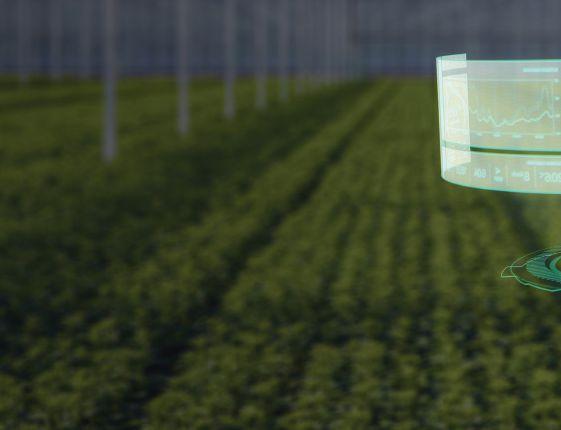

To learn more, stop by booth #415 at Cultivate ’19, from July 13-16 in Ohio, or visit argus-live.com

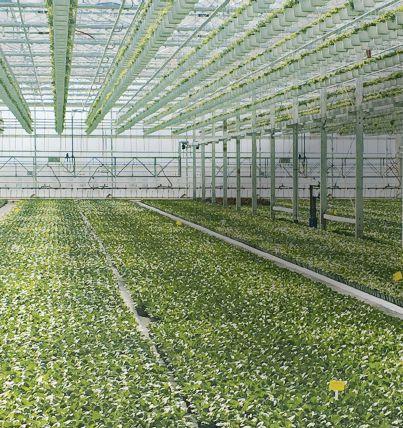




































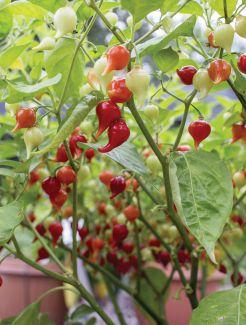
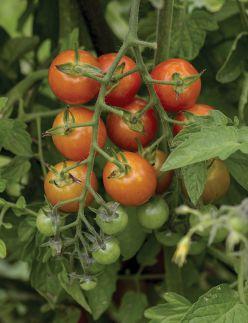
This star’s dark pink blooms are so abundant and crowded that they completely cover the foliage when the plant is at its peak. All gardeners will want to have it in their garden in 2019; in both sunny and shaded areas.
3.
Western Canada's Premiere Garden Centre, Landscape & Nursery Trade Show
Reserve Your Booth Now: canwest@bclna.com or 604 575 3504 SHOW THEME: VINTAGE

FEATURING:
Greenhouse Demo Zone: Demonstrating the Latest Products and Technology for Floriculture and Greenhouse Crops
30+ Industry Focused Seminars

325+ Booths
New Product Showcase Live Entertainment, Tailgate Party, Food Trucks, Networking Best of the Fraser Valley Tour
This new selection, with its perfectly heart-shaped leaves, will keep its shape and beautiful colour all summer, in both flower beds as well as planter arrangements. The colour of its remarkable foliage changes from dark purple at the beginning of its growth, to dark black.
This hybrid salvia is shrublike in appearance and has a very unusual colour: a pretty fuchsia flower with a black calyx that contrasts beautifully with its dark green foliage. Its nectarproducing blooms attract bees, butterflies and even hummingbirds.
The plant’s shape is very graphic, and its spectacular large leaves are silvery white, thick and slightly silky. The plant is hardy to -7 °C, but can also be grown inside, making it a very versatile plant for consumers.
The white to purple flowers produce fruit that are red or bright sunshine yellow at maturity. The peppers are small, measuring only 2 to 3 cm in diameter. Quite a few people say this pepper tastes a lot like tangy rhubarb. For the best taste, it should be eaten raw, because it loses a lot of flavour when cooked. The plant is compact and grows slowly. ‘Biquinho Iracema’ is well-adapted to growth in pots. It takes 85 to 90 days to reach maturity.
The Profi-Frutti series are indeterminate plants that were selected for their excellent productivity. The Profi-Frutti Cherry cultivar has round, glossy, deep red cherry-type tomatoes. The Brix, a scale that measures sugars, is 10 °Bx for this tomato, making it very tasty and sweet. It takes approximately 90 days after transplanting to reach maturity. If you are planning on visiting Quebec this summer, stop at one of the program’s three assessment gardens and vote for your favourite vegetables and annuals. Who knows, maybe your “favourite” plant will become an Exceptionnelle in 2020! Annie Champagne is the project communications manager at the Fédération interdisciplinaire de l’horticulture ornementale du Québec. She can be reached at annie.champagne@fihoq.qc.ca.
B est-in-c lass genetic per formance under disease pressure
Rigorous, controlled testing for disease res istance in la boratory and field settings
Independent verification testing and results by established authorities in the field
For more information, ca ll 8 55- 630 - 3139 or visit www.syngentaflowers-us.com /campaign /xdr
Contact your preferred sales representative or broke r partner today.
A ll photos are either the property of Syngenta or are used with permission © 2019 Syngenta. S ome or all of the varieties may be protected und e r one or more of the following: Plant Variety Protection, United S tates Plan t Patents and / or Utility Patents and may not be propag ate or reproduced w ithout au th o riz a ti o n. The trademarks or service marks displayed or otherwise used herein are the property of a Syngenta Group Company. All other trademar ks are the propert y of their respective owners.
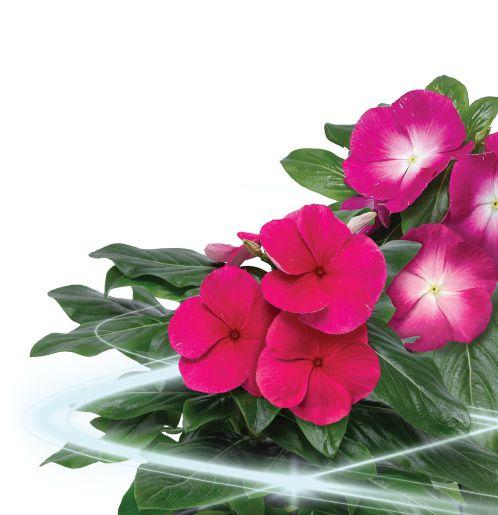





Tour innovative garden centres and learn about being progressive in a

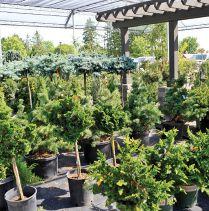
Learn from retail experts and prepare for your future


















This research study shows how sulphur can be reduced by 87.5 per cent in potted mums without compromising quality.
BY WILLIAM J. SUTTON AND DR. BARRY J. SHELP
For plants, sulphur (S) is essential for growth and development. Many forms of S exist in plants. These include: sulphate, the main source of S extracted from soil; amino acids important to plant health; and, other compounds needed for plant defence. Sulphur can be stored, primarily in mature leaves and stems, then drawn from later in plant development to satisfy some of the S demands in reproductive stages, such as flower and seed development. S deficiency can also change how S is transported into the plant, which promotes the movement of sulphate into and through the roots, as well as the release of stored S for metabolism and/ or transport to other areas of the plant as needed.
While S is applied at the lowest concentration of all the macronutrients in fertilizer solutions, it is typically applied in excess of the plant’s needs. Recently, we tested two methods for reducing the S supply to sub-irrigated, potted, disbudded chrysanthemums: (1) S removal during the reproductive growth stage; and (2) S reduction during the vegetative growth stage. All the S regimens tested produced market quality plants, even when S delivered over the crop cycle was substantially less than typical industry recommendations. Together, these two methods offer a novel delivery strategy for efficiently managing the S nutrition of chrysanthemum.
different areas. Similar to the industry standard, 72 ppm S was supplied as a complete nutrient solution over both vegetative and reproductive growth stages (labelled as 72VR). The three experimental treatments, 72, 36 and 18 ppm S, were supplied in an otherwise complete nutrient solution up until the inflorescence emerged (i.e., during the vegetative stage only), and then replaced with deionized water during the reproductive stage (labelled as 72V, 36V and 18V, respectively). The plants were harvested when the flowers were fully

FIGURE 1
Impact of S treatment on sulphur use efficiency (mg shoot dry mass ÷ mg S input) of ‘Olympia’ and ‘Covington’ chrysanthemums. 72VR received 72 ppm S over both vegetative and reproductive stages, whereas 72V, 36V and 18V, respectively, received 72, 36 and 18 ppm S over the vegetative stage only. The data represents the mean of four treatment replicates, each consisting of five biological replicates derived from two plants; bars sharing the same lowercase letters within cultivars are not significantly different.
Disbudded, potted chrysanthemums were grown in an uncharged peat-perlite mix under greenhouse conditions using two cultivars (‘Olympia’ and ‘Covington’) and four different S treatments, each replicated in four
expanded (eight weeks after short days were imposed to induce flowering), and assessed for visual quality and plant characteristics
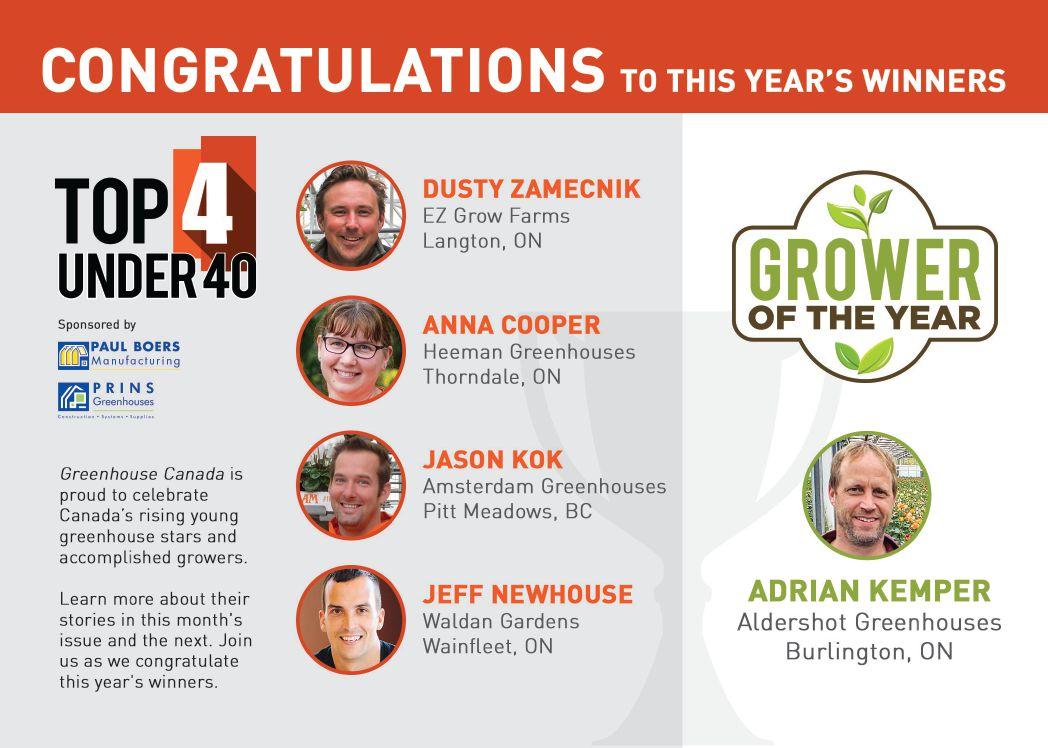

One of the most definitive and conclusive books written about perennials, the first edition was designated as one of the best 75 books written in the last 75 years by the American Horticulture Society, and the third promises to be even better.
The third edition of “The Big Perennial Book” (as it is fondly referred to by many practitioners) describes 3,600 species in 1224 pages. More than 300 colour photos complement detailed text filled with the author’s pointed observations of plant performance, cultivar selection and current taxonomy.
/ equipment for wreaths, garland, urns etc.


wreath rings / spool wire
• wreath / garland machines
• fully waterproof red berries
• Lowes hand pruners

• deer / birds/ feathers
• novelties / centerpieces
• picks / painted cones
• large ribbon selection



• info@mapleridgesupply.com (989) 356-4807

Shipping carts, shipping racks, display racks, grower racks, grower benches and shopping carts.

Designs and sizes are customized to buyers’ needs. Hot dip galvanized or coloured powder coated. Manufactured in Vietnam. Factory direct

viroglobaltrade.com 506-460-8696 viroglobal@haimy.com
Being distinct cultivars, the morphological characteristics (i.e., shoot length, inflorescence diameter and fresh/dry mass yields) differed between ‘Olympia’ and ‘Covington’. However, neither cultivar was affected by removing S during the reproductive phase and/or reducing S during the vegetative stage. Regardless of treatment, market quality flowers were produced without any decrease in flower diameter or visible symptoms of S deficiency on either leaves or flowers (Fig. 3), even when given the lowest S treatment of 18 ppm S during the vegetative stage, and zero S during the reproductive stage (18V).
To better understand how chrysanthemums were able to compensate for the lower S inputs, two measures of

S use were calculated: S-use efficiency (shoot dry weight divided by weight of sulphur input) and S-uptake efficiency (shoot S content divided by weight of sulphur input). As shown in Figures 1 and 2, both measures generally increased in ‘Olympia’ and ‘Covington’ with decreasing S. These results suggest that the primary method for the chrysanthemum plant to improve S use efficiency with decreasing S inputs was increased uptake efficiency. This could be explained by stimulation of multiple transport proteins that mediate the movement of sulphate from the soil into and through the root, driven by a deficiency in S.
This study monitored the response of two morphologically-distinct cultivars of sub-irrigated, potted chrysanthemum to various S regimens. With both cultivars, market quality plants and flowers were
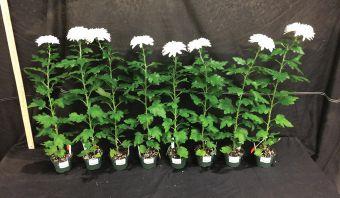
produced, even when S delivery over the crop cycle was reduced by approximately 87.5 per cent of typical industry recommendations.
Our previous research demonstrated that levels of the highly-mobile macronutrient, nitrogen, delivered in the nutrient solution to sub-irrigated, potted chrysanthemums, can be reduced by 50 per cent during vegetative growth, and then completely removed during reproductive growth without adverse effects on plant/flower yield and quality, giving an overall reduction in nitrogen use by 75 per cent. We are continuing study of the remaining macronutrients (i.e., phosphorus, potassium, calcium and magnesium), as well as the micronutrients (i.e., zinc, copper, iron, manganese, boron and molybdenum), in order to develop a complete, optimized nutrient regimen, which will then be validated in a commercial setting. These modified management practices should be readily adoptable by growers, with no additional research and development necessary, particularly since there does not appear to be substantial differences between cultivars in their response to our nutrient delivery system.
Chrysanthemums are a popular indoor-grown potted plant in Canada, and with our novel nutrient delivery system, it will be possible to reduce fertilizer use, as well as the volume of nutrient solution that must eventually be managed in accordance with applicable environmental legislation.
Acknowledgements: This research was funded by the Ontario Ministry of Agriculture, Food and Rural Affairs through the OMAFRA-University of Guelph partnership. Thanks to Berger for providing the uncharged growing medium.
For more details, see the articles, “Strategic timing and rate of sulphur fertilization improves sulphur use efficiency in sub-irrigated greenhouse-grown chrysanthemums”, which is published in the Canadian Journal of Plant Science, and “Moving towards low-input floricultural operations”, which is published in the December 2018 issue of Greenhouse Canada magazine.
William Sutton and Barry Shelp are graduate student and Professor Emeritus, respectively, in the Department of Plant Agriculture at the University of Guelph. For more information, please contact Dr. Shelp at bshelp@uoguelph.ca.
T: (519) 429-3966 • F: (519) 428-3327
CLASSIFIED RATES: Minimum order $75.00 or 84¢ per word, word ads must be pre-paid. C LA SS IFIED DI SPLAYS: $72.00 per column inch. GENERAL INFORMATION: Payment must accom- pany order. Copy required on publication close date. All advertising copy subject to the approval of the publisher. Send order and remittance to: Classified Dept., Greenhouse Canada, P.O. Box 530, Donly Dr. S., Simcoe, ON N3Y 4N5 Canada
USED/REFURBISHED BOILERS
• Sizes ranging from 40 HP to 800 HP
• Low and High Pressure
• Gas and Oil Fired RENTALS AVAILABLE Telephone: 519-326-8500 07/1t/pd








FOR SALE: Successful retail nursery business in Qualicum Beach on Vancouver Island. Approx. 11,000 s.f. of greenhouses and cold frames on an 11 acre mountain view parcel with 2 spotless houses. Main home is 2082 s.f. with 5 beds and 2 baths – 2nd home is 837 s.f. with 2 beds and 1 bath Domestic water supplied by 2 wells, water for the nursery from large irrigation pond. Offered at $1,350,000 Cdn Call Dave Ney – 250-240-4411 or email daveney@shaw.ca
Royal LePage Parksville Qualicum Beach Realty 07/1t/pd PURCHASED LATE 2018 / NEARLY BRAND NEW / PERFECT CONDITION

Cast your eyes over articles that discuss rootzone management and conversation is usually focused on a number of issues around soil or nutrient solution chemistry (pH, EC, specific nutrients, dissolved oxygen) or physical properties (e.g. water availability, irrigation strategies, media saturation and air filled porosity). Obviously, these are all key factors that need careful attention, particularly in hydroponic systems.
But, unless we’re discussing a particular root disease, it strikes me that we don’t often consider the topic of rootzone biology. I guess it’s harder to see or measure, and it’s therefore easier to concentrate on characteristics that can be managed through data collection. It’s often said that ‘you can’t manage what you can’t measure’. And soil biology is probably quite hard to measure.
Some years ago (more than I care to remember actually), work was done at Stockbridge House Experimental Station (now Stockbridge Technology Centre) in Yorkshire, England, looking at efficacy of disinfection techniques for re-circulating hydroponic nutrient solution in rockwool-grown cucumbers. The trial set out to investigate the potential risk from particular root disease organisms, the assumption being that since the solution was re-circulating, then infecting plants in one area of the greenhouse would
could help a plant thrive. Once we’re able to easily, affordably and reliably measure such factors, then we could start to manage them for the benefit of our crops.
And there may be more. In his book ‘The Hidden Life of Trees’, Peter Wohlleben describes the friendship of trees with one another, to the extent that he believes stumps of otherwise seemingly dead trees can be kept alive by supplies of sugar from neighbouring (actively growing) trees. This “assistance may either be delivered remotely by fungal networks around tree root tips – which facilitate nutrient exchange between trees2 – or the roots themselves may be interconnected.3” Wohlleben has other examples of where “healthy neighbouring pines must have been helping their dying comrades by supplying their roots with food” and he proposes that “nutrient exchange and helping neighbours in times of need is the rule” rather than the exception. Further, he states that “you find twice the amount of life-giving nitrogen and phosphorus in plants that cooperate with fungal partners than in plants that tap into the soil with their roots alone”.1
...we don’t often consider the topic of rootzone biology.
lead to widespread and rapid infection of plants throughout the entire crop. However, it turned out that while fungal infections did spread, the rate seemed to be at a much lower rate than expected. Delving further into what was happening, a number of beneficial organisms were found in the rootzone, helping to slow down the spread of pathogens. However, it is difficult to measure those same beneficial organisms in a commercial setting which doesn’t have laboratory equipment and procedures.
Imagine for a moment then, if we could insert a cheap and reliable probe into our rockwool slabs, coir bags, hanging baskets or plant pots to give us real-time measurement of the number of beneficial organisms present. Or the population and diversity of plant pathogens. Or perhaps the actual distribution of mycorrhizae or bacteria that
OK, so trees do have one very significant advantage over our production crops in building these ‘friendships’. We all know that getting to know someone takes time. Growing through a complete crop cycle in no more than (typically) one year, our greenhouse crops aren’t blessed with an abundance of time to build these relationships. All the more reason then for us to learn about them, nurture them and build them into being an integral part of our everyday rootzone management. Ponder this next time you reach out for your pH / EC probe.
1 Wohlleben, Peter (2015) “The Hidden Life of Trees”. Greystone Books Ltd.
2 Fraser, E.C. et al (2006) “Carbohydrate transfer through root grafts” in Tree Physiology, vol 26, quoted in Wohlleben.
3 Maffei, Massimo, quoted in “The Silent Scream”, MaxPlanckResearch 4 (2007) 65 (referenced in Wohlleben).
Gary Jones is co-chair of Horticulture at Kwantlen Polytechnic University, Langley, BC. He sits on several industry committees and welcomes comments at Gary.Jones@kpu.ca






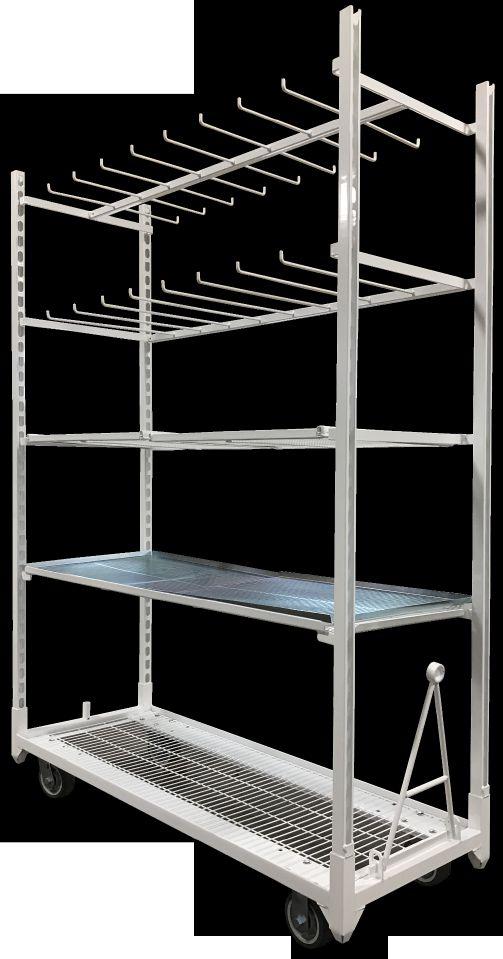







Custom Designing Available

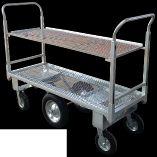















Westbrook Greenhouse Systems began when Bill Vermeer, a grower himself, couldn’t find the product he wanted on the market — so he made his own.
We still operate under that mindset today. Your growing needs are unique. It’s our job to work with you to find what suits you best.
We understand every part of this business, from commercial growers to nurseries to retail outlets, and we begin by listening.
We want to hear about your ideal growing environment. Give us a call at 1-855-945-0806 or visit us online at westbrooksystems.com.